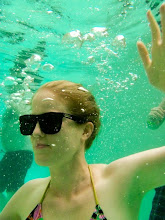The other day, I decided to finally go for a wander up to the university, which is not too far from the Uniklinik where I am. I decided that going by the main roads was boring, so I took the scenic route instead – I found a nice green strip behind all the buildings, which led me to the field of sheep and geese you can see below (I’m looking backwards here – I had come from the tall building in the background):

After walking for about an hour, I realised I probably should have paid much more attention to the map, as it appeared my usual “walk in the general direction of the place” method had failed (I blame the large hill, from which it was difficult to find a way down to street level). At least I got to see some of the Mainz suburbia, including this tram-in-a-field:

My map is extremely detailed and very hard to read, so luckily a nice man on a bike pulled over and pointed out where we were. My artist’s impression below should illustrate just how far out of the way I had gotten.

Finally, I reached the uni, which is on quite a large campus, and is a combination of nice old buildings like this:

And QUT-esque monstrosities like this:

I made it home just before dark, then went to the shops because I realised I hadn’t eaten any chocolate for over a week. I found a brand which had about 6 different sticks of chocolate, all with different percentages of cocoa, which I feel it is my duty to learn the difference between. I also decided I should gain an appreciation for wine, being in a wine-making region, so I got a couple of €1.99 bottles of bubbly to go with my cheese and chocolate. It’s all about immersing yourself in the culture.

The next morning (Sat), I went to the markets, which are held 3 times a week, in front of the giant church you saw in the last post. It was bloody freezing – maybe 10°C, with a biting wind – but I managed to decipher the German names of the products and in the end came home with some fresh fruits and veges. I also bought a mystery meat, which luckily turned out to be turkey. They had cheese there too, but it all looked a bit hard to decipher, so I didn’t bother.

Soon after returning home, Manuela (Prof. Wölfel’s secretary) and her husband picked me up for the trip to Trier, which is about 200 km from Mainz, in the WSW direction. It claims to be the oldest city in Germany, being settled in the 1st century BC by Julius Caesar, and it was home to numerous Roman emperors, archbishops and princes elector (according to my guide book). This is the beautiful Hauptmarkt (main marketplace), with the baroque St Gangolf’s church in the background:

Trier is packed with monuments, the most famous of which is the imposing Porta Nigra, the “Black Gate”, built in the 2nd century. It is the oldest surviving Roman city gate north of the Alps – it was the northern gate through the city walls, which were originally 6.4 km long, and of which only remnants remain today.

Just off the Hauptmarkt is the Dom (Cathedral), which is absolutely massive (for size, see the small ppl walking past the front door), and was first built in the 4th century. It has been reconstructed and altered numerous times, due to fires and storming by angry Franks and Normans, but it is essentially Romanesque.

Right next to it is the French Gothic Church of our Lady, which, along with the Dom and Porta Nigra, is protected by UNESCO.

Not far from these churches is the Konstantin Basilika, which I took a photo of and then moved on because I thought it was ugly…

…but then I read about it in my book and learned that it was the palace audience hall, so I had to go back to find the Electoral Palace, built in 300 AD by Emperor Constantinus Chlorus.

Apparently there were originally extensive imperial structures around the Palace, but only the Basilika remains, thanks to some “restructuring” in the 17th century, and also WWII bombs.
Heading south, I found the Imperial Baths, which were built under Emperor Constantine and were originally 250 × 145 m in size. They were never used for their intended purpose, instead being used for things such as a military campsite, government lodgings, and a corner bastion of the city walls.

A little further on from the Baths is the Amphitheater, which was used for animal fights, gladiator contests and prisoner executions from 160 AD. It sat 20 000 spectators, and the arena measures 71 × 47 m. There were 13 vaulted cages within the walls, which probably housed animals and prisoners. It was closed off by the time I got there, but I managed to get this picture through the gates:

Trier is in the middle of a famous wine-making region, and sits on the Mosel River:

On the left side of the photo, you can see the word “Weinkellar” – obviously, one of the many wine cellars of the area.
Aside from these things, Trier is the birthplace of Karl Marx, whose house still stands (but I couldn’t find it, and there were wayward youths hanging around, so I left). It also has good shopping – I found so many shirts for €1.50-€5, and even got a jumper for €2. I might go back with Manuela in May, when it will hopefully be sunny, and I can go back to some of the churches and monuments and go inside, because many are open to the public and have very impressive furnishings and artworks.
Anyhoo, that was a very long entry, so I hope you haven’t all fallen asleep.
Till next time,
Michelle
